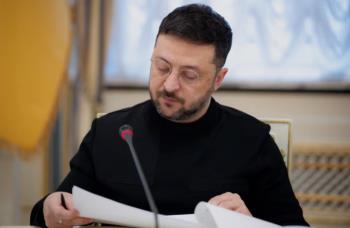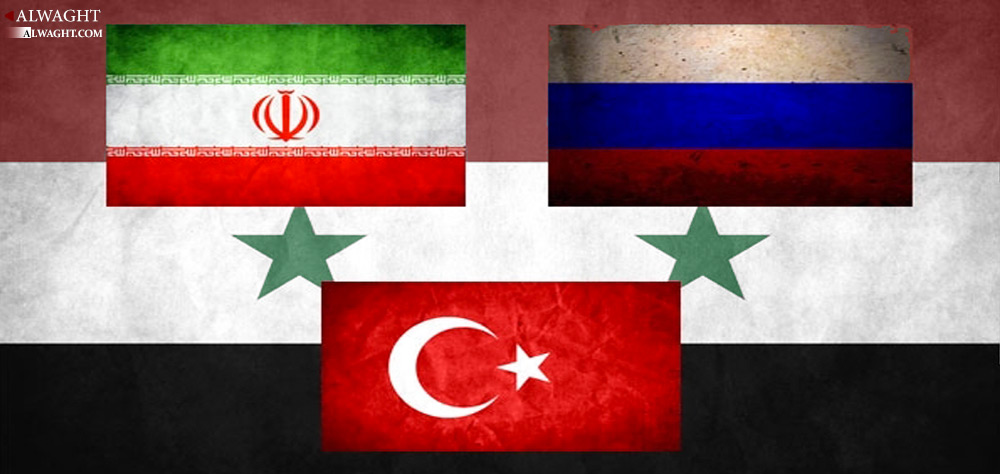Alwaght- Eruption of the Syrian crisis on 25 February 2015 as the most complicated crisis of the West Asia region in the new millennium has caught attention multiple regional and international actors.
The very latest development in the Syrian conflict that grabs the international community's observation is start of a new stage of ceasefire brokered and monitored by Russia and Turkey. According to terms of the deal between Ankara and Moscow, the truce took effect on December 30.
The apparent goal behind a new round of cessation of hostility is that as a result of enforcement of a comprehensive ceasefire across the country a chance will be created for delivering aids to the Syrian civilians stuck in the war-hit areas. Then, the holding of fire is supposed to pave the way for political negotiations between the warring sides in the country.
Regardless of the viability of the ceasefire deal in the enforcement stage, the recent accord can be deemed as a turning point in the Syrian political developments and also the future of West Asia. The level of the actors engaged in the deal and the process of reaching the agreement between Russia and Turkey are of vast importance. In general, due to an active role of the President Vladimir Putin of Russia and President Recep Tayyip Erdogan of Turkey, the recently-agreed truce is of overarching dimensions all deserving a proper analysis and assessment.
The current piece is set to examine the aspects of the new round of gun-quietening deal from four dimensions.
Iran's behind-the-scenes role in ceasefire deal
One of the issues that took notice of the observers and the political analysts is absence of Iran among the main brokers of the fresh ceasefire. In fact, the new truce initiative is named a Russian-Syrian-Turkish deal. Despite the fact that in practice the list of arrangers of the ceasefire did not include Iran, the Iranian Foreign Minister Javad Zarif has reacted positively to its announcement. Zarif first in a Twitter post called the new truce “a major achievement”, declaring Tehran’s backing for it. He then talked by phone to his Turkish and Russian counterparts, expressing contentment over its implementation on December 30.
A look at the way the Iranian FM reacted can make it clear that Iran has fully been aware of the process of dialogue and accord. As the Russian officials announced, Tehran was informed of the peace deal. Even it can be said that not expressing name of Iran in the truce is a kind of a preplanned scenario. Considering of Tehran-Moscow-Ankara relations in the past few months, it becomes clear that in the process of the Syrian developments Iran has taken a key role. From another aspect, absence of Iran's name among the ceasefire brokers can be an attempt to assure the anti-Damascus opposition forces as well as Saudi Arabia. This is actually an attempt to oblige them to adhere to the accord terms, and also steer clear of possible disruption of the peace deal enforcement by Riyadh.
Drawing distinct lines between terrorists and ceasefire-respecting forces
In the new truce a measure has been taken to guarantee commitment of the actors on the ground to the continuation of the deal. It is a separation between the forces included in the deal and those excluded. According to a list released by the Russian ministry of defense, the number of the militants belonging to the armed groups covered by the fire-holding initiative is about 50,000. Meanwhile, Faylaq al-Sham, Jaysh al-Islam, Mujahid al-Sham, Jaysh al-Mujahedeen, Jaysh Idlib, and Jabhat Al-Shamiyah are seen in the list of groups observing the ceasefire. ISIS and Jabhat Fateh al-Sham (formerly al-Nusra Front) are excluded from the list as they are already blacklisted as terrorist groups.
Practical closeness of Ankara to Tehran-Moscow-Damascus camp
Since the beginning of the Syrian crisis in February 2011, the Turkish leaders took tough anti-Damascus stances, demanding removal of President Bashar al-Assad from power. They actually went to great lengths to overthrow the legitimate central government of the neighboring country. As a result of such a policy tough tensions began to rise between Turkey and its neighbors, Iran and Iraq. However, in past few months, particularly after former Turkish PM Ahmet Davutoglu Stepped down, Ankara postures saw a drastic shift toward the Syrian– and the whole West Asia region– developments.
Erdogan’s meeting with Russian President Vladimir Putin on August 6, 2016, in St. Petersburg can be deemed as a crucial juncture in the beginning of changes in the region’s equations. As part of the continued process of changes, the visit of Iran's FM on August 12, 2016, to Ankara and visit of Turkey’s FM to Tehran on August 18 in the same year ushered in a series of political agreements on the future of Syria.
Notwithstanding all of the developments, the Turkish good-faith steps, including getting close to Tehran and Moscow, failed to come to existence concretely and proved dubious, especially after Erdogan's decision to invade northern Syria. But the strategic win in Aleppo and the active and outstanding role of the Syrian army and its regional backers in this triumph that pushed a change in Ankara’s dealing with Syria conflict and taking a positive role in the recently-agreed ceasefire can stand as signs of the Turkish leaders' real will and good faith in closeness to Russia as well as Iran. However, it can be boldly noted that the main objective of Turkey behind its active participation in reaching the truce accord is an effort to offset Ankara’s failure in materializing its earlier aims, including toppling President Assad, appeasing the Turkish public opinion, and also destroying the newly-formed federal government of the Kurds in northern Syria.
Driving the West and the US out of the Syrian circle
As Putin put it, the ceasefire was scheduled to come into force on the last day of 2016, and since the initial stages Moscow will monitor it. In next steps, the diplomatic talks to reach a final settlement to the six-year, devastating struggle will begin. This makes it crystal clear that Turkey through applying a realistic policy of moving close to Russia has paved the way for the Syrian developments to take an intra-Syrian track without presence of the US and other Western sides. On January 8, 2017, a peace negotiations round is set to be held between the central Syrian government and the opposition sides in Astana, the Kazakh capital, under a Turkish-Russian supervision, according to comments by the Russian officials. This arrangement signals the fact that Erdogan has quitted optimism in the West and chose to go on with his quest for power through alliance with Moscow and Tehran.



























